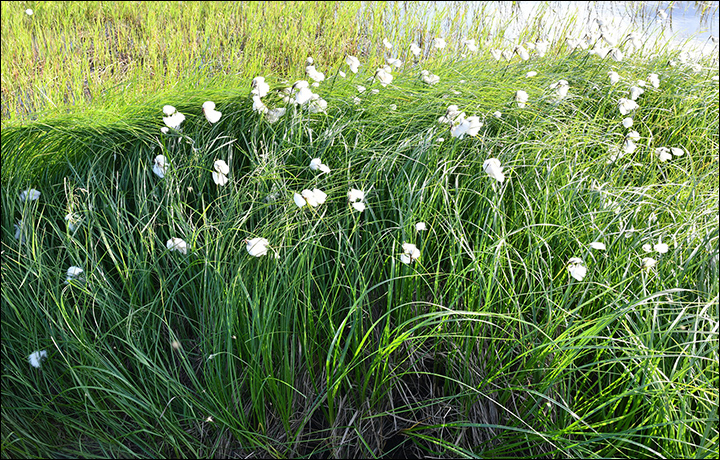Poppies,
dandelions and
daisies bloom in never
before seen Arctic oases
Discovery of rich vegetation only 1000 miles away from North Pole surprises scientists.

The photographed area is 70th parallel north - with a distance to North Pole of only 1043 miles - where Russia has its northernmost residential settlements of Western Siberia. Picture: Sergey Loiko
16
October, 2019
‘Blooming’
might be the last word to associate with the Arctic, yet pictures
below
show meadows bursting with life as brightly-coloured flowers
blossom in lush
green grass.
And
while vegetation in khasyreis, basins of drained Arctic lakes, is
less of a
surprise, researchers discovered ‘bursts of life’ next
to a residential settlement
where permafrost ice veins were broken
when people dug sand pits.
The
photographed area is 70th parallel north - with a distance to North
Pole of
only 1043 miles - where Russia has its northernmost
residential settlements of
Western Siberia.
There,
in bleak Arctic tundra summer-2019 expedition organised by Tomsk
State University found oases of rich vegetation formed in places of
actively thawing permafrost.





‘Blooming’ might be the last word to associate with the Arctic, yet pictures show meadows bursting with life as brightly-coloured flowers blossom in lush green grass. Pictures: Sergey Loiko
As
researchers explained, initially ice veins in permafrost were broken
when
people dug sand pits.
Over
time disturbed permafrost thawed and enriched soil with minerals from
its
deep frozen layers. As soil above permafrost continued to move,
broken cover of
moss and lichen also subsided, preparing space for
seeds of herbs and cereals.
arrived they saw carpets of herbs and flowers, with daisies, dandelions, polar
poppies, horsetail, several types of wormwood, cereals and even willow growing
in Arctic ‘oases’.


Tomsk State University's expedition pictured during summer 2019 expedition to the Yamal Peninsula.
Pictures: Sergey Loiko
It
all came as a surprise as the expedition travelled to the Yamal
peninsula with
a different aim - to study dried-up basins of local
lakes, or ‘Khasyreys’ - and didn’t expect to see signs of such
active vegetation elsewhere.
‘Khasyreis
usually form over quite a long time, in decades actually’, said
Sergey
Loiko, senior researcher at laboratory for biogeochemical and
remote methods of monitoring the environment at Tomsk State
University (TSU).
Nowadays
as Tomsk expedition confirmed, Khasyreys take just weeks to form.


Discovery of rich vegetation only 1000 mile away from North Pole surprises scientists. Pictures: Sergey Loiko
In
summer 2016 which was quite hot, one lake drained entirely in less
than a month through gaps in thawing permafrost. By the time Tomsk
expedition arrived to the lake its bed was covered with herbs and
cereals.
Russian
researchers concluded that Khasyreis were forming much faster during
the past 30 years, doubling the number of such landscapes in Arcric
tundra and showing there is tendency for the Arctic to become warmer
and greener.
While
it was surprising to discover oases of lush vegetation so high up in
the Arctic, researchers believe this is the smallest of the issues.
Potential threat to the infrastructure is more worrying.
‘Local
thermokarst is not as worrying as it might seem as Arctic plants
formed in the Pleistocene under the influence of constant moderate
disturbances. The local flora is well adapted to it. Permafrost
thawing is undesirable because of potential threat to infrastructure,
because of potential damage it might cause to roads’, Sergey Loiko
explained.
In
the future, changes and expansion of the Arctic flora might lead to
appearance of a bigger variety of fauna and bring over animals that
have never populated this area.



No comments:
Post a Comment
Note: only a member of this blog may post a comment.